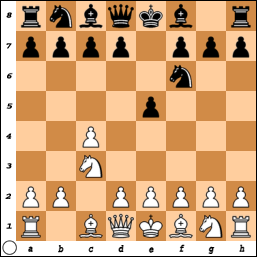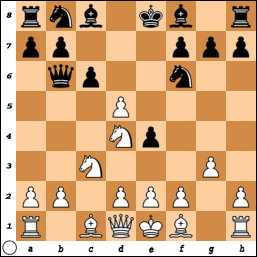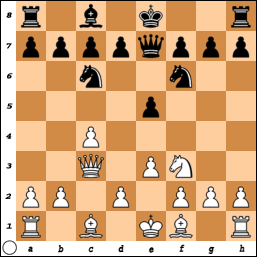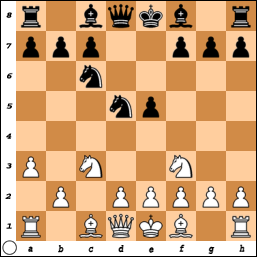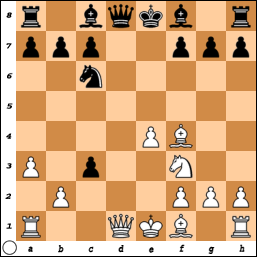
White's up

Black's last move prepares to trade off White's only active minor piece, after which the Black pieces will flow into White's queenside. As the game proved, Black is fine here.
When studying the game, I wondered if there was a more direct way for White to play. After 12.Rb1 e6 13.Nc7+ Nxc7 14.Bxc7 Na4, I began looking at 15.e4, with the obvious idea of playing e5 and closing the long diagonal. The next few moves seemed to be forced: 15..Rc8 16.Bd6 Nxb2 (if 16..Bd4, trying to stay on the diagonal, then 17.Ne2 develops with tempo) 16.e5 Nxc4 17.Bxc4 Rxc4 18.Rxb7, reaching the following position:

This is a fun position to investigate, since both sides have concrete problems with king position and development. At first I was enthusiastic about White's chances. The threat to the a-pawn carries some importance in lines like 19..f6 20.Ne2 fe 21.Rxa7, with advantage to White, while a line like 19..a6? 20.Ne2 f6 21.Kf2 fe 22.Rd1 shows what happens if White can get his kingside pieces into play -- the dark-squared monster on d6 cuts Black's position in half. Moreover, after the obvious 19..Rc1+ 20.Kf2, White actually threatens to sac an exchange with 21.Ne2, for example 20..a6 21.Ne2! Rxh1 22.Rb8+ Bc8 23.Rxc8+ Kd7 24.Rc7+ with the initiative.
For a moment it looked as though I had finally produced a decent novelty. Sadly, I soon realized that the 19..Rc1+ 20.Kf2 f6! spoils all the fun. White can grab on a7, but his kingside is bottled up for the foreseeable future. The deeper you play this position, the less your computer will like it for White.
I then looked at the finesse 19..Rc1+ 20.Kd2!? Bh6+, but suffice to say that 21.Kd3 Bc6(!) 22.Rb8+ Kd7 23.Rxh8 leads by force to a perpetual check (The reader can work out the details as an exercise).

(Black to move and draw)
Meanwhile, 21.Ke2 is untrustworthy after something like 21..Kd8 22.Rxa7 Rc2+ 23.Kd3 Rd2+ 24.Kc3 Rd1, locking White's kingside pieces in.

(White to move and suffer)
Shattered, I steeled myself to play the Bg5 & Qa4+ line instead, despite the fact that it's almost as wussy as the London system. And yeah, I've started playing that too. Sometimes searching for 'truth' just takes too much energy...
[p.s. for those who are interested, the opening moves in this Bf4 Grunfeld line are 1.d4 Nf6 2.c4 g6 3.Nc3 d5 4.Bf4 Bg7 5.e3 c5 6.dc Qa5 7.Qa4+ Qxa4 8.Nxa4 Bd7!? 9.Nc3 Ne4! 10.Nxd5 Na6 11.f3 Nexc5. One of the reasons this "novelty" was never going to be very good is that there are many fine alternatives for Black: on move five there is 5..c6, on move eight 8..Be6, and on move nine 9..Bc6!?.]




